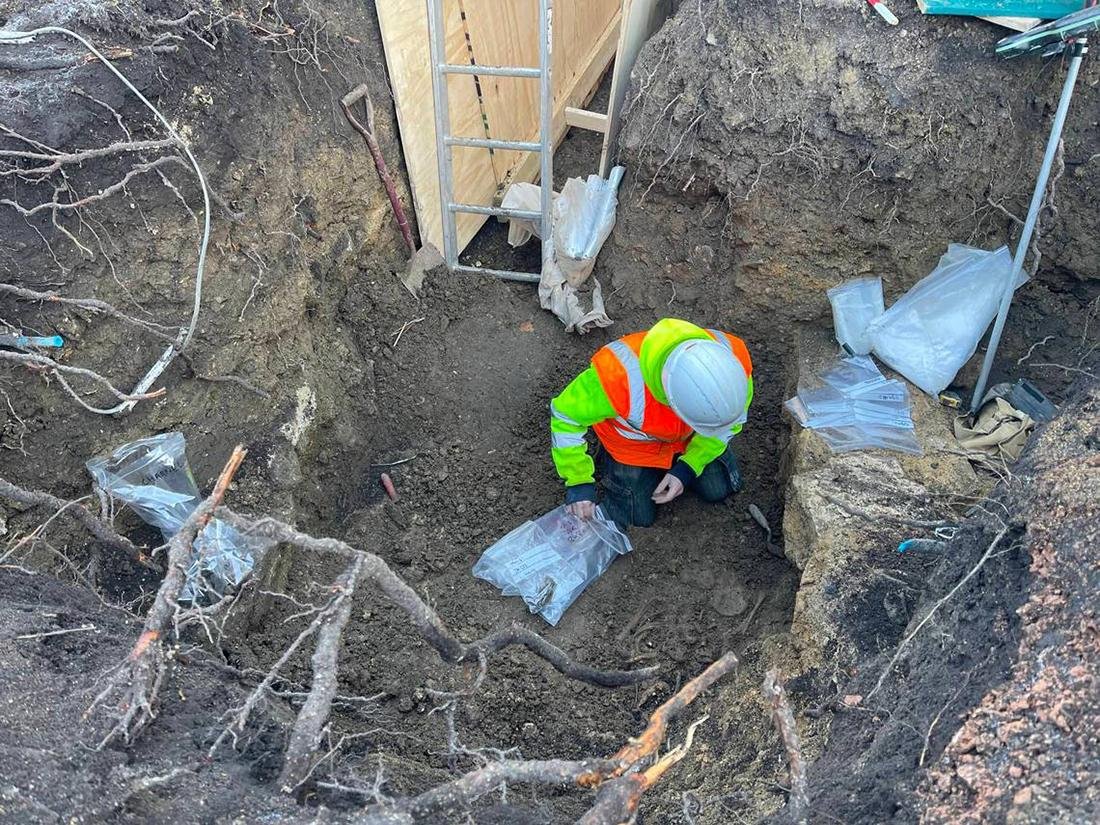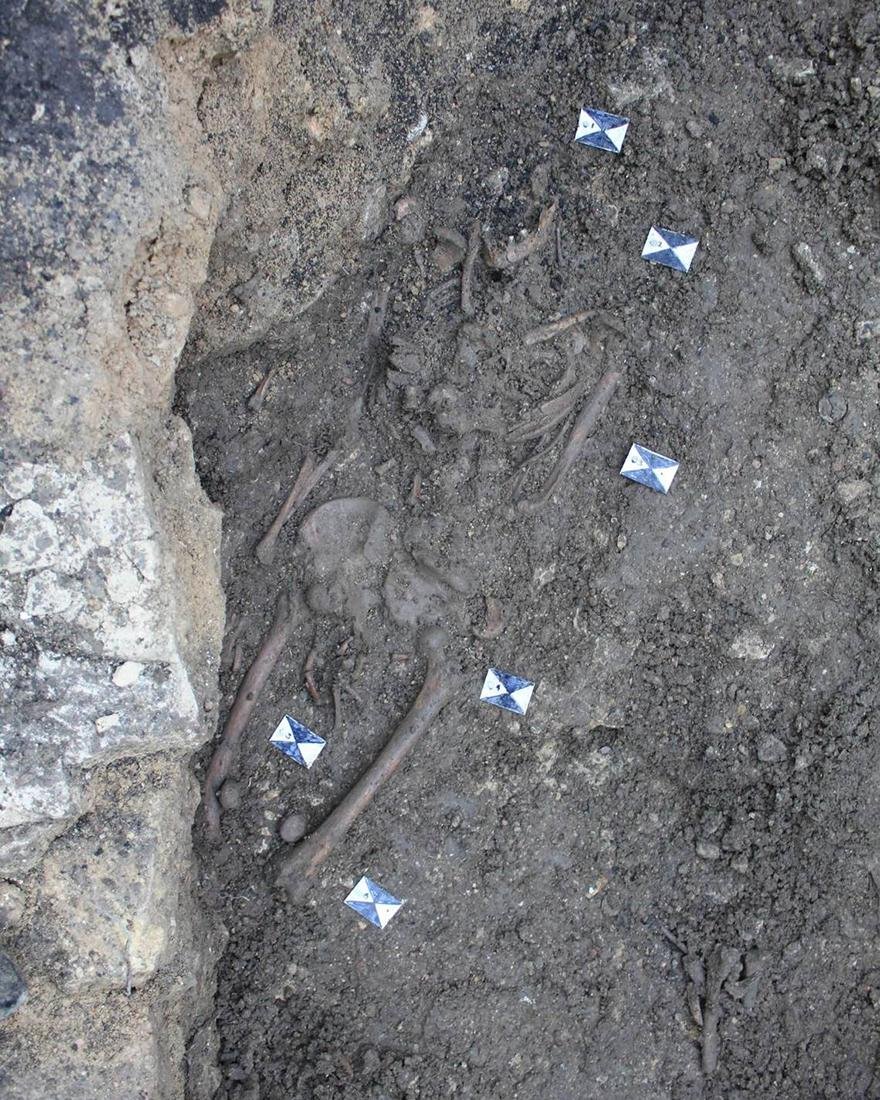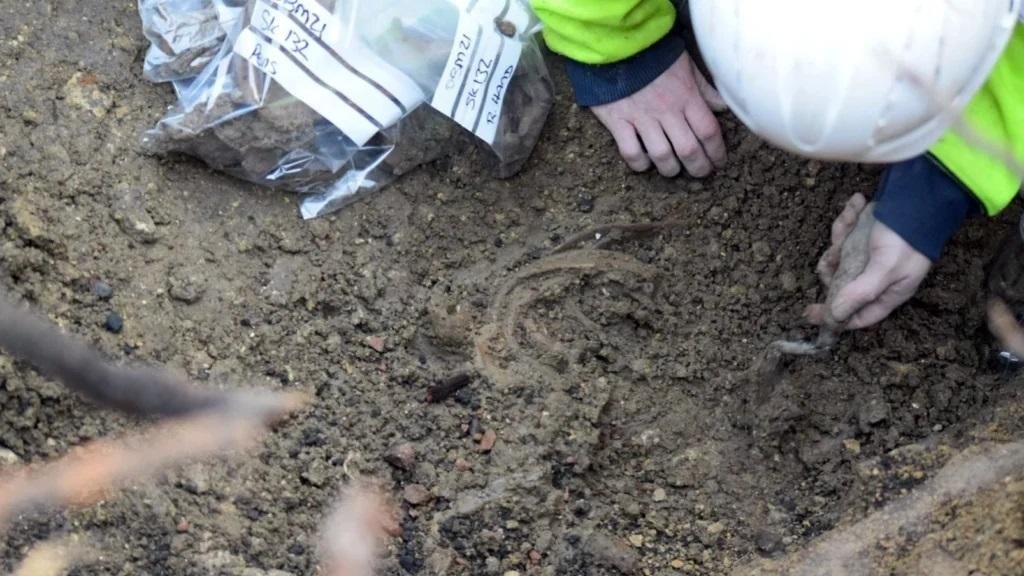Archaeologists have discovered a cemetery on the grounds of The Old Bell H๏τel in Malmesbury, Wiltshire, England, dating back over a thousand years. This excavation has uncovered the skeletal remains of 24 individuals.
 Excavation of Anglo-Saxon remains at The Old Bell. Credit: Cotswold Archaeology
Excavation of Anglo-Saxon remains at The Old Bell. Credit: Cotswold Archaeology
This find provides the first confirmed physical evidence of the early monastic community ᴀssociated with Malmesbury Abbey, one of the most significant centers of learning in Western Europe during its peak.
The Old Bell H๏τel, a historic building dating back to 1220, is situated adjacent to Malmesbury Abbey, a former Benedictine monastery founded around CE 676 by the scholar-poet Aldhelm. The abbey, dedicated to Saint Peter and Saint Paul, is a site of considerable historical importance, housing the burials of notable figures such as Máel Dub, who established the first monastic community in Malmesbury, and Æthelstan, considered by many as the first king of England. It is also believed to be a potential site where the Anglo-Saxon poem Beowulf was transcribed.
 One of the at least 1,100-year-old skeletons found at the site. Credit: Cotswold Archaeology
One of the at least 1,100-year-old skeletons found at the site. Credit: Cotswold Archaeology
The excavation, conducted in 2023 ahead of a construction project, was part of the Big Athelstan Dig, a community archaeology event celebrating the 1100th anniversary of Æthelstan’s crowning. This event has unearthed not only skeletal remains but also ᴀssociated grave goods, dating from CE 670 to 940. These discoveries offer invaluable insights into the early days of Malmesbury Abbey, which emerged as a leading center of academic learning and scholarship under abbots such as Aldhelm, John Scotus Eriugena, Alfred of Malmesbury, and Aelfric of Eynsham.
 Another skeleton unearthed at the site. Credit: Cotswold Archaeology
Another skeleton unearthed at the site. Credit: Cotswold Archaeology
Tony McAleavy, a historian and local resident said: “This discovery literally transforms our understanding of the birth of Malmesbury Abbey in the seventh and eighth centuries. What we’ve got here is not a collection of the bodies of monks – it’s men, women, and children. It looks like we’ve found traces of the community of people who helped the monks here.”
Paolo Guarino, ᴀssistant Publications Manager and Malmesbury resident noted: “We knew from historical sources that the monastery was founded in that period, but we never had solid evidence before this excavation. The discovery includes remains from the Middle Saxon period, marking the first confirmed evidence of 7th to 9th-century activity in Malmesbury.”
 Anglo-Saxon remains under excavation. Credit: Cotswold Archaeology
Anglo-Saxon remains under excavation. Credit: Cotswold Archaeology
The excavation has not only confirmed historical accounts but also provided physical evidence of the settlement that predates the construction of the abbey. According to Alex Thomson, the project manager, “The finds represent the first confirmed evidence of 7th–9th century CE activity in Malmesbury. It suggests that the burials were potentially ᴀssociated with the early establishment of the neighboring Benedictine monastery.”
The owners of the Old Bell H๏τel, Kim and Whit Hanks, said in a release: “We are honored to act as stewards of local history, a responsibility we take very seriously. This exciting discovery intertwines history with the present, providing a rare insight into the lives of Middle Saxon period Malmesbury residents.”
Cotswold Archaeology





